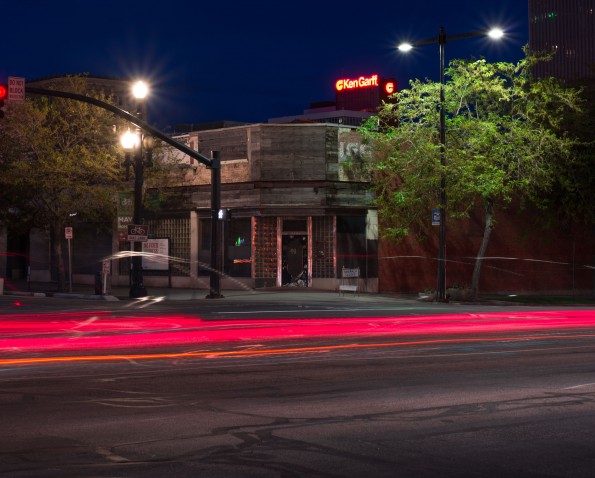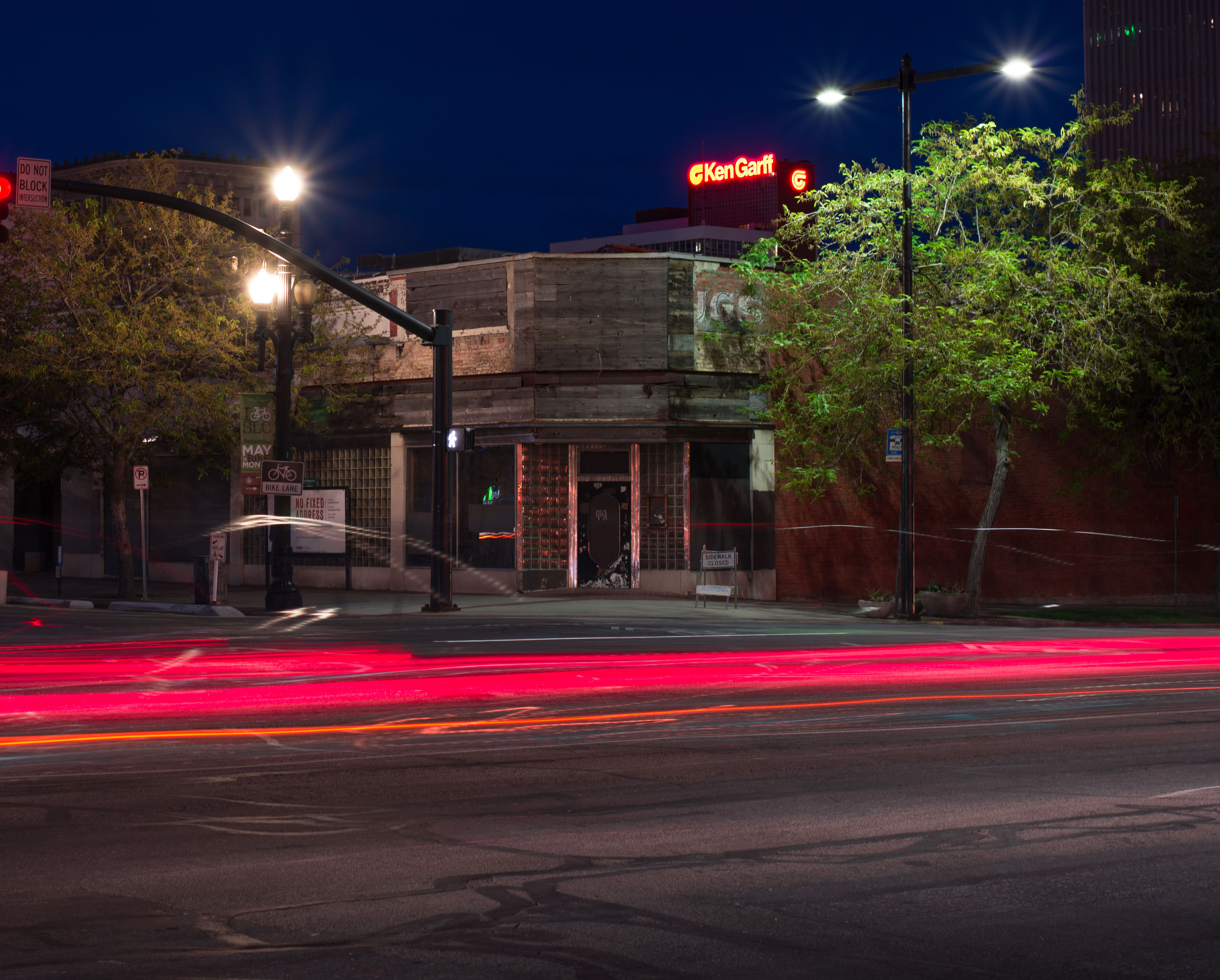
The Zephyr Club once blew hot rock and blues through Salt Lake City.
There are few Salt Lake City buildings that show a greater contrast between the recent past and present than the former Zephyr Club’s crumbling façade. At its zenith during the late 1980s and early 90s, the Zephyr, with its art deco gleaming metal front door framed by glass blocks, was the epicenter of live music and nightlife in the capital city. At its 300 South/West Temple location, the club hosted acts that ranged from local bluesmen to world famous artists such as Warren Zevon and Robert Palmer.
“We started as a supper club but we also had live music and it became apparent the first three nights we were open that what people really wanted was the music,” said former owner Otto Mileti.
The Zephyr had features that made it a great place for live music. With a capacity of about 400 people and a ceiling just barely high enough to accommodate a balcony, the audience felt close to the performers. “It was big enough to have a good crowd but still be a cozy club,” said Mileti.
While the Zephyr hosted artists of all stripes, there was a deep shade of blues throughout the club’s history according to Michael Ricks, a local musician with the Tempo Timers blues band and the long-time Zephyr sound engineer.
“The club really got on the map with the blues guys,” said Ricks. Mileti said while big names like John Lee Hooker, George Thorogood, and even the White Stripes and the Black Keys in their early days would fill the club, there was a core group of local “bread and butter bands” that always drew a crowd.
“There were groups like the Crazy 8’s, Little Women (fronted by Jerry Joseph now of Jerry Joseph and the Jack Mormons) Monkey Meat and a few others that were just part of our regular line up,” Mileti said.
Mileti said the Zephyr also led the charge for the ways bars and, at the time, private clubs, could advertise and make money in a state with strict liquor regulations. Mileti said they gave out free memberships and worked around advertising restrictions by labeling ads first as the member newsletter for the club and later with disclaimers noting the ads were intended for Zephyr members only.
When Mileti’s lease ran out in 2004 and a “gentleman’s agreement” to buy the building fell through, the building went to auction and was purchased by the Bamberger Investment and Exploration Company. Disputes with the city over demolishing the block have led to its current, essentially abandoned state, but for many Salt Lakers, passing by the boarded-up frontage of the once lively club, the echoes of great rock and blues still resound.






